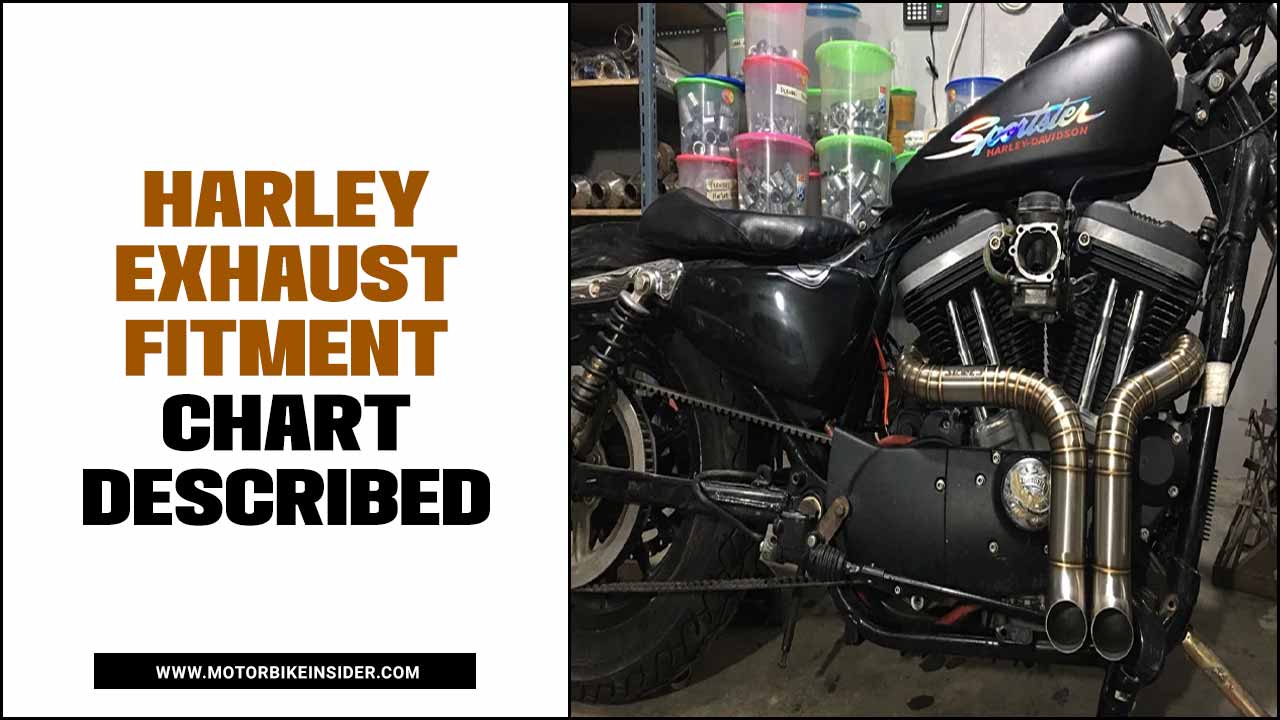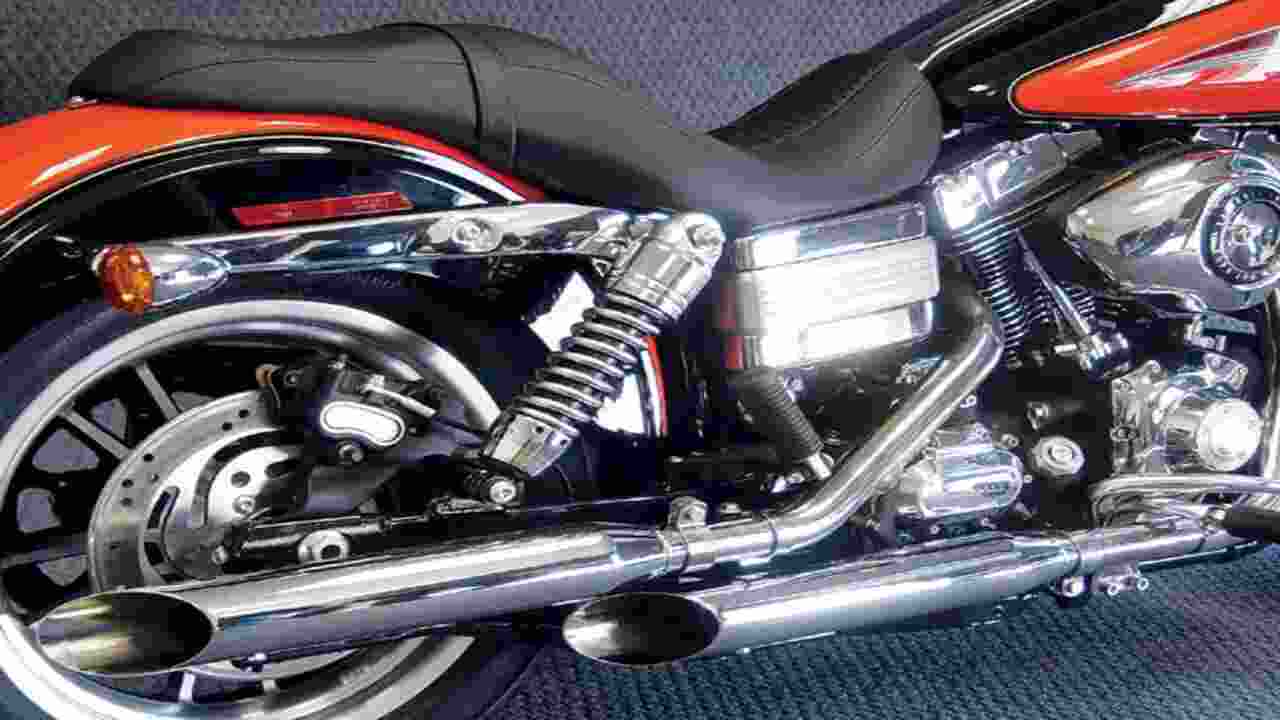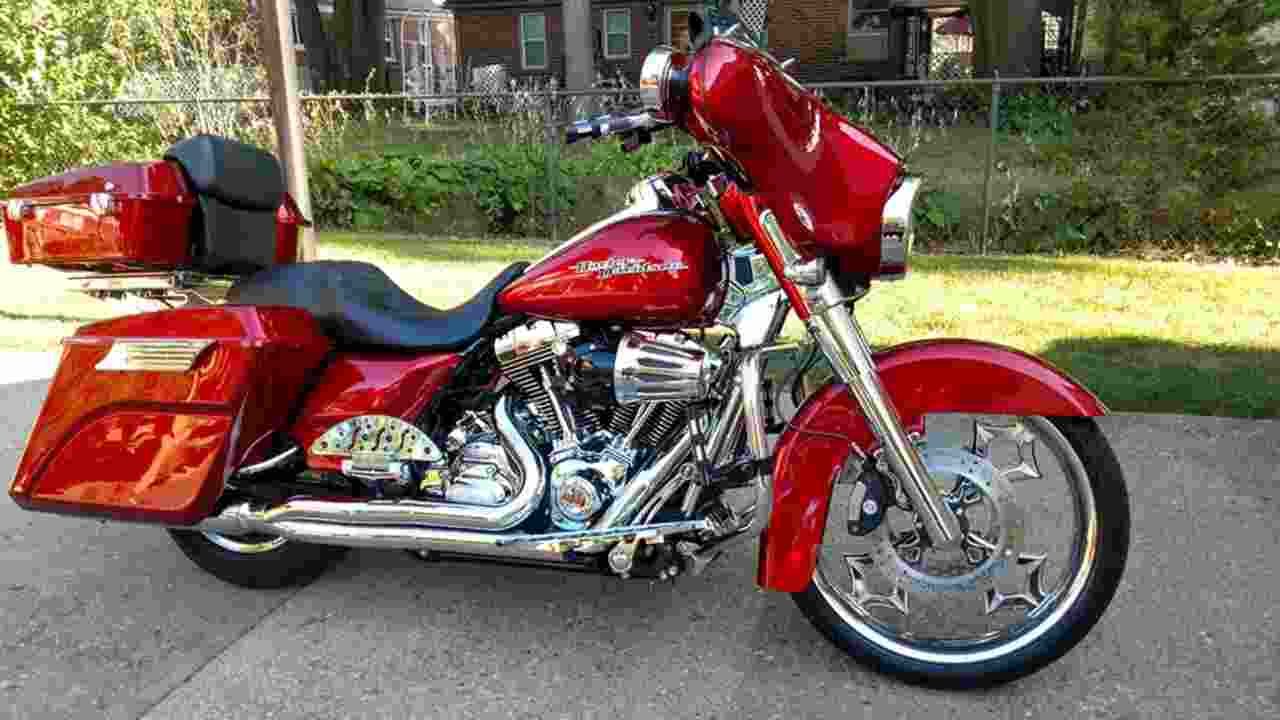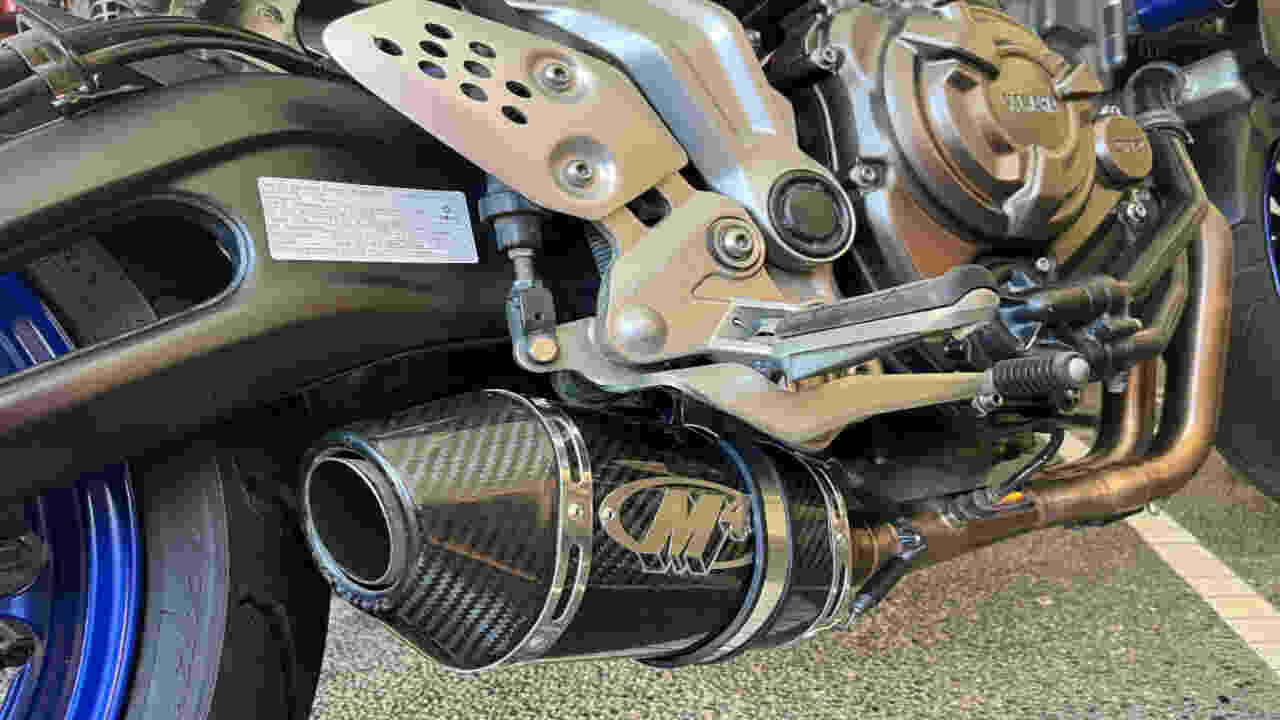Harley-Davidson motorcycles have been a symbol of power, style, and individuality for over a century. With a wide range of models and customization options, Harley riders take pride in creating a unique and personalized ride.
One crucial aspect of this customization process is selecting the right exhaust system. A properly fitted exhaust not only enhances the bike’s overall performance but also adds a distinct sound and appearance. However, with the many options available in the market, finding the perfect exhaust fit for your Harley can be daunting.
That’s where the Harley Exhaust Fitment Chart comes in. Here, we will delve into the importance of exhaust fitment, the factors to consider while selecting an exhaust, and how the Harley-Exhaust Fitment Chart can aid in finding the ideal match for your Harley-Davidson.

Understanding The Different Harley Models And Years
Precision and compatibility are crucial factors to consider. Harley-Davidson motorcycles are renowned for their iconic rumble, and the exhaust system plays a pivotal role in delivering that distinct sound and enhancing the bike’s overall performance.
Harley Davidson offers various motorcycle models, each with distinct features and characteristics. Here is some information on different Harley models and their respective years:
- Harley Davidson Sportster: The Sportster is a popular model for its agility and performance benefits. It has been in production since 1957, with various iterations and engine sizes available.
- Harley Davidson Softail: The Softail line combines the classic look of a hardtail frame with modern suspension technology for a smooth ride. Models like the Fat Boy, Heritage Softail, and Street Bob fall under this category.
- Harley Davidson Touring: Touring models are designed for long-distance riding and comfort. They feature larger engines, spacious seating, and ample storage capacity. Popular Touring models include the Road King, Electra Glide, and 2014-2020 Street Glide.
- Harley Davidson Dyna: The Dyna lineup is known for its powerful performance and aggressive styling. Models like the Super Glide, Wide Glide, and Low Rider balance comfort and sportiness.
- Harley Davidson V-Rod: Harley’s venture into modern performance motorcycles is the V-Rod series. These models feature a liquid-cooled 4-stroke engine and a more contemporary design, appealing to riders who seek speed and power.
Overview Of Exhaust Systems And Harley Exhaust Fitment Chart

Exhaust systems play a crucial role in motorcycle performance and aggressive sound, including Harley-Davidson 12-17 bike pipes. They are responsible for directing the exhaust port gases away from the engine, reducing back pressure, and improving overall engine performance.
There are various types of exhaust systems available for Harley-Davidson motorcycles, ranging from stock straight pipes or factory-fitted options to aftermarket upgrades. Each exhaust system has its features, benefits, and considerations. Here is the Harley Exhaust Fitment Chart:
| Year | Model | Exhaust Fitment |
| 2000 | Sportster 883 | 2-into-1 Shorty Slip-Ons |
| 2005 | Softail Deluxe | True Dual Exhaust System |
| 2010 | Dyna Wide Glide | 2-into-2 Shotgun Exhaust |
| 2015 | Street Glide | 4-inch Megaphone Mufflers |
| 2020 | Road King | 2-into-1 High Flow System |
Determining The Correct Fitment For Your Harley

One of the key aspects of exhaust fitment is ensuring that the exhaust system is specifically designed and crafted for the Harley model in question. Each Harley-Davidson motorcycle has unique specifications, and a properly fitted exhaust system ensures optimal performance and functionality.
Determining the correct fitment for your 2-into-1 Harley exhaust is an important aspect of customization and ensuring optimal performance. Here are some key factors to consider:
- Harley Model: Different Harley models may have varying exhaust fitment requirements. It’s crucial to identify your bike’s specific model and year to ensure compatibility with the exhaust system you choose.
- Exhaust Style: Decide on the type of exhaust system you want, such as a 2-into-1, true duals, or slip-on mufflers. Each 2-into-1 style may have different fitment specifications, so it’s essential to understand your bike’s capabilities and any modifications that may be needed.
- Pipe Diameter: The diameter of the exhaust single pipe can significantly impact the bike’s performance. Selecting a pipe size that matches your Harley’s engine capacity and overall performance goals is important.
- Mounting Hardware: Ensure that your exhaust system comes with the necessary mounting hardware. This includes brackets, clamps, and bolts for a secure and proper fit.
Common Fitment Issues And Solutions
Proper exhaust fitment is not limited to just the connection between the exhaust pipes and the motorcycle’s engine. It extends to components such as the mufflers, headers, and other exhaust accessories.
These elements must be carefully selected and installed to align perfectly with the Harley’s frame and other surrounding parts. Common Fitment Issues and Solutions for Harley Exhaust:
- Clearance Issues: One common issue with Harley exhaust systems is insufficient clearance, particularly when installing aftermarket or custom exhausts. This can result in the exhaust hitting other bike parts, such as the frame or bodywork.
Solution: To address clearance issues, you may need to adjust the exhaust system or install additional spacers or brackets. It is essential to ensure proper clearance to prevent damage to the exhaust or other components.
- Mounting Bracket Compatibility: Another fitment issue arises when the mounting brackets of the aftermarket exhaust do not align correctly with the bike’s frame or mounting points. This can lead to an unstable or loose exhaust system.
Solution: If your aftermarket exhaust doesn’t align properly, you may need to modify the mounting brackets or purchase additional fender bracket adapters. It’s important to ensure a secure and stable fit to prevent damage or exhaust leaks.
- Exhaust Gas Leak: Improper fitment or installation can result in exhaust gas leaks, causing a decrease in performance and potentially impacting the rider’s safety.
Solution: To address exhaust gas leaks, carefully inspect the connections between the exhaust pipes and the headers or mufflers. Ensure all connections are secure and properly sealed using appropriate gaskets or exhaust sealants.
Aftermarket Exhaust Options And Compatibility

Aftermarket exhaust options for Harley motorcycles offer a wide variety of choices for riders looking to enhance the performance and sound of their bikes. These exhaust systems have specific designs to replace the stock exhausts and provide better airflow, increased power, and a more aggressive tone.
Compatibility with your Harley motorcycle will depend on your bike’s specific make, model, and year. It is important to choose an aftermarket exhaust system that is specifically designed to fit your Harley model. Many manufacturers provide fitment guides or compatibility charts to help you find the right exhaust for your bike.
Installation Tips And Tricks
Harley exhaust fitment also plays a significant role in adhering to legal requirements and regulations. Ensuring the exhaust system meets emission standards and noise limitations is essential to avoid legal complications or penalties. Here are Installation Tips and Tricks:
- Measure the diameter of your Harley’s exhaust separate pipes to ensure proper fitment of the new exhaust system.
- Check the compatibility of the new exhaust system with your Harley’s model and year.
- Remove any existing exhaust components, such as heat shields or baffles, before installing the new system.
- Use high-quality exhaust gaskets to prevent leaks and ensure proper sealing.
- Apply anti-seize compound on the exhaust mounting bolts to prevent corrosion and make future removal easier.
- Follow the manufacturer’s instructions carefully to install the new exhaust system properly.
- Double-check all connections and tighten them securely to avoid any potential exhaust leaks.
- Consider using aftermarket accessories, such as heat shields or muffler tips.
- Take your time during installation to ensure everything is installed correctly and securely.
- If you’re unsure about the installation process, consult a professional or seek advice from Harley enthusiasts or forums.
Maintaining And Caring For Your Harley Exhaust

Harley-Davidson motorcycles are popular for their distinctive rumble, and finding an exhaust system that complements this iconic sound is crucial. Whether it’s a slip-on muffler or a full exhaust system, ensuring that it is designed specifically for the model and year of your Harley is essential. This ensures proper alignment, clearance, and optimal performance. Here are Maintaining and Caring for Your Harley Exhaust:
- Regularly inspect your Harley exhaust for any signs of damage or wear.
- Keep the exhaust clean by regularly wiping it with a mild soap and water.
- Avoid using abrasive cleaners or solvents that could damage the finish of the exhaust.
- Check the mounting brackets and hardware regularly to ensure they are secure and tightened properly.
- Maintain proper clearance between the exhaust and other components to prevent heat-related damage.
- Use heat shields or wraps to protect the exhaust and surrounding components further.
- Avoid excessive idling or prolonged periods of high engine heat, as it can cause damage to the exhaust.
- Inspect the exhaust gaskets regularly and replace them if they show signs of wear or leakage.
Conclusion
Understanding the fitment of a Harley exhaust system is crucial for any rider looking to upgrade or replace their current setup. With the help of a fitment chart, riders can easily determine which exhaust options are compatible with their specific bike model and make an informed decision.
By following this guide on the Harley Exhaust Fitment Chart, riders can ensure a seamless installation process and enjoy the enhanced performance and sound of a new exhaust system on their Harley.
Remember to consult a professional if you have any doubts or questions about fitment, and always prioritize safety when modifying your motorcycle. So, before making any purchases, refer to this comprehensive fitment chart to make the best decision for your Harley.
FAQ
Is 2 Into-1 Exhaust Better On Harley?
The answer to whether a 2-1 exhaust is better on a Harley is subjective and depends on individual preferences and needs. Some riders prefer the performance advantage of motorcycles offered by a 2-1 exhaust, such as improved torque and horsepower, especially at higher RPMs.
What Size Is Harley Exhaust?
The size of Harley exhaust varies depending on the specific model and aftermarket modifications. However, most Harley exhaust systems have a pipe diameter ranging from 1.75 to 2.5 inches.
Do I Need To Tune My Harley If I Change Exhaust?
Yes, tuning your Harley if you change the exhaust. Changing the exhaust can alter the air-to-fuel ratio, which can affect the performance and overall functioning of the motorcycle.
What Is Harley Exhaust Made Of?
Harley exhaust systems typically come with a combination of materials, including stainless steel, chrome, and sometimes fiberglass or carbon fiber. These materials are chosen for their durability, heat resistance, and aesthetic appeal.
Why Are Harley Exhaust So Loud?
Harley exhausts are loud due to the design of their engines and Exhaust Pipe systems. Harley-Davidson motorcycles typically have large displacement engines producing a deep and powerful sound.

I have a pair of new Harley Chrome Evo slash cut pipies .but have no clue to which Harley they would be used for